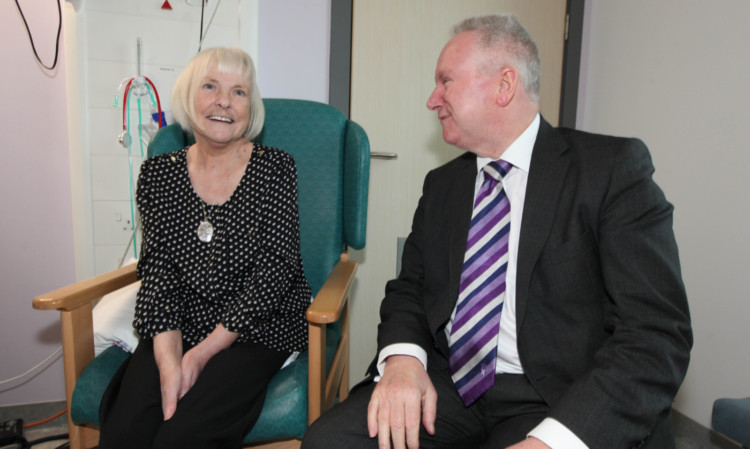Scottish Health minister Alex Neil has welcomed the establishment of a new dedicated discharge hub that is helping to reduce delays for patients waiting to get home from the Victoria Hospital in Kirkcaldy.
The unit, which has been put in place through the Scottish Government’s £50 million emergency care action plan, is helping the hospital to cope with increased demand over the winter period.
The team, which was set up in August, is working with wards throughout the hospital to ensure patients have the support they need to return home. It has seen 80% of patients discharged within one week of being referred.
Mr Neil made a private visit to the unit last Wednesday, where he met staff and a patient, Mary Saunderson, who is already benefiting from the new approach.
Mr Neil said: “NHS boards have to be ready to manage potential increases in demand over the winter period and last year we saw increased pressures on our hospitals in the peak of winter. That is why we introduced our three-year, £50 million emergency care action plan, so that health boards can put in place a number of new measures to ensure we can cope with the added strain that winter can bring.
“More than £9 million of this money has already been released to health boards to support their planning, which is triple the amount given to boards for winter planning last year.
“The discharge hub in Fife is a fantastic example of how health boards have made real changes that are benefiting patients.
“This approach is reaping benefits for patients in reducing the amount of time they have to wait in hospital before being discharged, and I was delighted to have the opportunity to meet with one of the patients who was about to return home from hospital.”
Vicky Irons, NHS Fife lead for community and reshaping care, said: “We review the progress of this team each week and it’s evident that the number of patients being assessed has continued to grow steadily.
“In the early part of January the number seen and assessed by the team reached 100 patients and 74% of those assessed were discharged or transferred to the next stage of care within the same week. It’s fantastic that such a new team can have such an instant impact in terms of patient care.”
The introduction of the hub at the hospital has transformed the management of patient discharges in the hospital.
Martin Thom, head of Fife Council’s older people’s services, said: “By working closely with NHS Fife, we are able to provide better and more effective ways of helping people back into their own homes and helping them to stay there for as long as possible.
“The service has been developing over the past year to put the service user at the centre, enabling them to be cared for at home for as long as is possible.
“Shifting the focus from reactive services for example, going in at the point of crisis to proactive early intervention and rehabilitation at home this is often referred to as re-ablement.
“The home care service is the backbone of care for people in the community and the dedication shown by staff is something that should be praised.
“The close working between home care staff, occupational therapists and nursing staff should also be recognised, as this collaborative working means that people get the right care at the right time. This is something that we will see more of as health and social care integration develops.”
